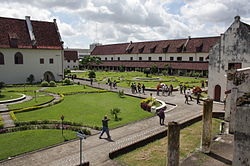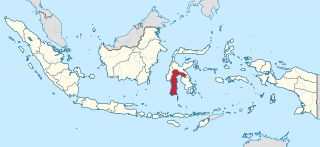
South Sulawesi is a province in the southern peninsula of Sulawesi, Indonesia. The Selayar Islands archipelago to the south of Sulawesi is also part of the province. The capital and largest city is Makassar. The province is bordered by Central Sulawesi and West Sulawesi to the north, the Gulf of Bone and Southeast Sulawesi to the east, Makassar Strait to the west, and Flores Sea to the south.
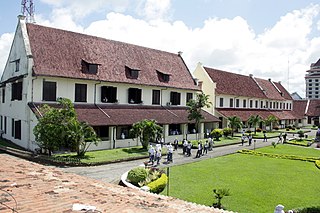
Makassar, formerly Ujung Pandang, is the capital of the Indonesian province of South Sulawesi. It is the largest city in the region of Eastern Indonesia and the country's fifth-largest urban center after Jakarta, Surabaya, Medan, and Bandung. The city is located on the southwest coast of the island of Sulawesi, facing the Makassar Strait.
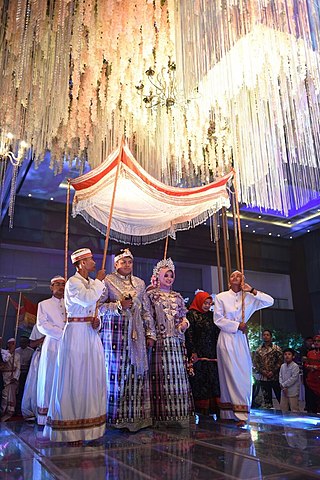
The Bugis people, also known as Buginese, are an Austronesian ethnic group—the most numerous of the three major linguistic and ethnic groups of South Sulawesi, in the south-western province of Sulawesi, third-largest island of Indonesia. The Bugis in 1605 converted to Islam from Animism. Although the majority of Bugis are Muslim, a small minority adhere to Christianity as well as a pre-Islamic indigenous belief called Tolotang.

Prince Diponegoro, also known as Dipanegara, was a Javanese prince who opposed the Dutch colonial rule. The eldest son of the Yogyakarta Sultan Hamengkubuwono III, he played an important role in the Java War between 1825 and 1830. After his defeat and capture, he was exiled to Makassar, where he died, at 69 years old.
Wajoq, also spelled Wajo, Wajo', or Wajok, was a Bugis elective principality in the eastern part of the South Sulawesi peninsula. It was founded in the 15th century, and reached its peak in the 18th century, when it briefly became the hegemon of South Sulawesi replacing Boné. Wajoq retained its independence until it was subdued in the early 20th century by the Dutch colonial government. It continued to exist in some form up to the mid-20th century, when the self-governing entity was transformed into Wajo Regency in the newly independent Republic of Indonesia.

Sultan Hasanuddin (Sultan Hasanuddin Tumenanga Ri Balla Pangkana; was the 16th Ruler of The Sultanate of Gowa as Sombaya Ri Gowa XVI from 1653 to 1669. He was proclaimed as Indonesian National Hero on 6 November 1973. The Dutch called Sultan Hasanuddin "the Rooster of the East" as he was described as aggressive in battle.

Dutch Celebes refers to the period of colonial governance on the island of Sulawesi - as a commandment of the Dutch East India Company from 1699 until its demise in the early 1800s, and then as a part of the Netherlands Indies or Dutch East Indies until 1945. Dutch presence in the region started with the capture of Sulawesi from the Portuguese, and ended with the establishment of the State of East Indonesia. Celebes is now referred to as Sulawesi. Makassar, the capital, was also referred to as: Macassar, Makassar, Macaçar, Mancaçar, or Goa, Gowa.
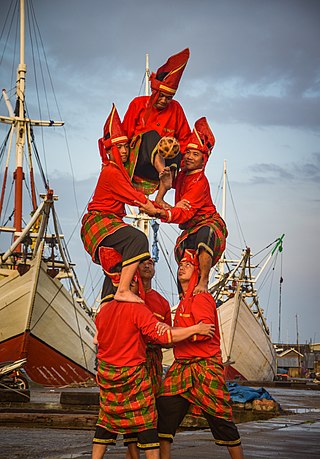
The Makassar or Makassarese people are an ethnic group that inhabits the southern part of the South Peninsula, Sulawesi in Indonesia. They live around Makassar, the capital city of the province of South Sulawesi, as well as the Konjo highlands, the coastal areas, and the Selayar and Spermonde islands. They speak Makassarese, which is closely related to Buginese, and also a Malay creole called Makassar Malay.
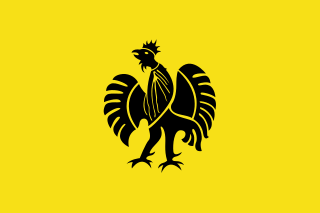
The Sultanate of Gowa was one of the great kingdoms in the history of Indonesia and the most successful kingdom in the South Sulawesi region. People of this kingdom come from the Makassar tribe who lived in the south end and the west coast of southern Sulawesi.
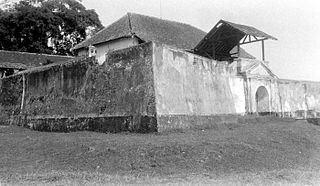
Fort Willem II of Ungaran is a late 18th-century fort built by the Dutch in Ungaran, Semarang Regency, Central Java, Indonesia. Its main purpose was to control an important trade route between Semarang and Yogyakarta. The fort is the place where Prince Diponegoro was imprisoned while waiting for his judgment in Batavia and further exile to Makassar. The fort is currently used as a dormitory for the families of Indonesian police personnel.

Fort Somba Opu was a fortified commercial center of the Gowa Sultanate. Its ruins are located in Makassar, South Sulawesi, Indonesia. The fort was the center of the Gowa Sultanate in the 16th-century until its destruction by the Dutch East India Company in 1669. The conquest of Somba Opu citadel was one of the most difficult campaigns the Company had ever undertaken in the East.
The Makassar kingdom of Gowa emerged around 1300 CE as one of many agrarian chiefdoms in the Indonesian peninsula of South Sulawesi. From the sixteenth century onward, Gowa and its coastal ally Talloq became the first powers to dominate most of the peninsula, following wide-ranging administrative and military reforms, including the creation of the first bureaucracy in South Sulawesi. The early history of the kingdom has been analyzed as an example of state formation.
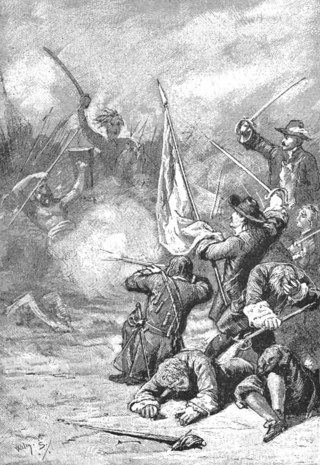
The Trunajaya Rebellion or Trunajaya War was the ultimately unsuccessful rebellion waged by the Madurese prince Trunajaya and fighters from Makassar against the Mataram Sultanate and its Dutch East India Company (VOC) supporters in Java during the 1670s.

Sultan Saaduddin Arung Palakka, or La Tenritatta to Unru' was a 17th-century Bugis prince and warrior. He supported the Dutch East India Company (VOC) in the Makassar War (1666–1669) against the Gowa Sultanate in his native South Sulawesi. After the defeat of Gowa, he became the King of Bone and South Sulawesi's most powerful man.

The Battle of Surabaya was fought in May 1677 during the Trunajaya rebellion, in which the Dutch East India Company defeated the forces of Trunajaya and took Surabaya on behalf of its ally, the Mataram Sultanate.
I Maninrori Kare Tojeng, also known as Karaeng Galesong, was a Makassarese nobleman and warrior, and a major leader of the Trunajaya rebellion in Java against the Mataram Sultanate. He participated in the successful invasion of East Java and the subsequent rebel victory at Battle of Gegodog (1676). He later broke out with Trunajaya, and built a stronghold in Kakaper, East Java. Dutch East India Company (VOC) and Bugis forces took Kakaper in October 1679, but Galesong escaped and rejoined Trunajaya. He died on 21 November 1679, either by illness or murdered by Trunajaya, before the rebellion ended.

The Kingdom of Banggai was a petty kingdom in present-day Central Sulawesi, Indonesia. It was based around the Banggai Islands and the eastern coast of Sulawesi, centered at the island of Banggai. For a significant part of its history, the kingdom was under the overlordship of the Sultanate of Ternate.
Sultan Hamza was the tenth Sultan of Ternate in the Maluku Islands. He ruled from 1627 to 1648, during a time when the Dutch East India Company (VOC) increasingly dominated this part of maritime Southeast Asia, and the increasing power of the Makassar kingdom threatened the Ternatan possessions.
Sultan Mandar Syah was the 11th Sultan of Ternate who reigned from 1648 to 1675. Like his predecessors he was heavily dependent on the Dutch East India Company (VOC), and was forced to comply to Dutch demands to extirpate spice trees in his domains, ensuring Dutch monopoly of the profitable spice trade. During the Great Ambon War in the 1650s, Mandar Syah sided with the VOC but was nevertheless pushed to cede control over areas in Central Maluku. On the other hand, the Ternate-VOC alliance led to a large increase of Ternatan territory in the war with Makassar in 1667.
